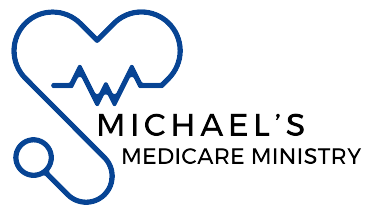Health Insurance Plans for Longview Residents
Longview is an active town in Washington, and located far away in the beautiful Pacific Northwest. Recognized for its beautiful scenery, close proximity to the Columbia River, and hospitable society, Longview accommodates a varied population of all generations.
Importance of Health Insurance Coverage
It plays a crucial role in well-being. Here’s why:
Access to Healthcare Services:
Having health insurance ensures that individuals can access essential medical services rapidly. Whether it’s preventive care, doctor visits, or emergency treatment, insurance coverage provides peace of mind.

Financial Protection:
Medical expenses can be overwhelming without insurance. Health coverage helps to manage the financial burden by covering a significant portion of healthcare costs. Copayments, deductibles, and coinsurance are more manageable when you have insurance.
Preventive Care and Early Detection:
Regular check-ups, screenings, and preventive services are vital for maintaining good health. With insurance, residents can receive preventive care without worrying about the cost.
Coverage for Chronic Conditions and Emergencies:
Chronic conditions like diabetes, heart disease, and asthma require ongoing management. Health insurance ensures that individuals receive necessary medications, treatments, and specialist consultations. In emergencies, insurance covers hospital stays, surgeries, and ambulance services.
Prescription Medications:
Many health plans include prescription drug coverage. Having insurance allows to afford necessary medications, improving overall health outcomes.
Mental Health and Behavioral Services:
Mental health is equally important. Insurance plans often cover counseling, therapy, and substance abuse treatment. Access to mental health services contributes to a healthier community.
Maternity and Pediatric Care:
For families, it provides coverage during pregnancy, childbirth, and pediatric care for newborns and children. Regular pediatric visits, vaccinations, and well-child check-ups are essential for children’s growth and development.
Types of Health Insurance Plans
Employer-Sponsored Plans
These plans are provided by employers to their employees as part of employee benefits. Coverage extends to employees and often includes their dependents (spouses and children).
Features
Premiums are typically shared between the employer and the employee. Employer-sponsored plans may include health maintenance organization (HMO), preferred provider organization (PPO), or other options. Employees have access to a network of healthcare providers chosen by the employer. These plans often offer comprehensive coverage, including preventive care, hospitalization, and prescription drugs
Individual and Family Plans
These plans are purchased directly by individuals or families from insurance companies or through the Health Insurance Marketplace. Ideal for self-employed individuals, those without employer-sponsored coverage, or families not covered by group plans.
Features
Individuals can choose from various plan types (HMO, PPO, EPO, or POS) based on their preferences. Premiums, deductibles, and out-of-pocket costs vary depending on the plan. Coverage includes essential health benefits such as preventive care, emergency services, and prescription drugs. Families can enroll together, ensuring consistent coverage for all household members.
Medicare and Medicaid Options
A federal program primarily for individuals aged 65 and older, as well as certain younger individuals with disabilities.
Consists of Different Parts
Part A (Hospital Insurance): Covers inpatient hospital stays, skilled nursing facility care, and some home health services.
Part B (Medical Insurance): Covers outpatient services, doctor visits, preventive care, and durable medical equipment.
Part C (Medicare Advantage): Combines Parts A and B, often with additional benefits like prescription drug coverage, dental, vision, and hearing. Before selecting you must know what is Medicare Advantage Plan and how does it works
Part D (Prescription Drug Coverage): Provides coverage for prescription medications.
Medicaid
A joint federal and state program that provides health coverage to low-income individuals and families. Eligibility varies by state and includes pregnant women, children, seniors, and people with disabilities. Medicaid covers essential health services, including hospital visits, doctor appointments, and preventive care.
Comparing Coverage Options
Premiums, Deductibles, and Copayments
Premiums
The amount you pay regularly (monthly or annually) to maintain your health insurance coverage. Consider your budget and choose a premium that aligns with your financial situation.
Deductibles
The amount you must pay out of pocket before your insurance starts covering costs. High-deductible plans often have lower premiums but require more upfront payments.
Copayments
Fixed amounts you pay for specific services (e.g., doctor visits, prescriptions). Evaluate copays for common services you expect to use.
Network Considerations
In-Network
- Providers (doctors, hospitals, specialists) who have contracts with your insurance company.
- In-network services are usually more cost-effective.
Out-of-Network
- Providers not in your insurance company’s network.
- Out-of-network services may result in higher costs or limited coverage.
- Consider your preferred providers and their network status.
Visiting Details
Monday – Friday: 9:00am – 5:00pm
Saturday – Sunday: Closed
Address: 250 Cypress St, Longview, WA 98632, United States
E-mail: wmichaeljarman@gmail.com
Contact Us: +1 (503) 828-2328
